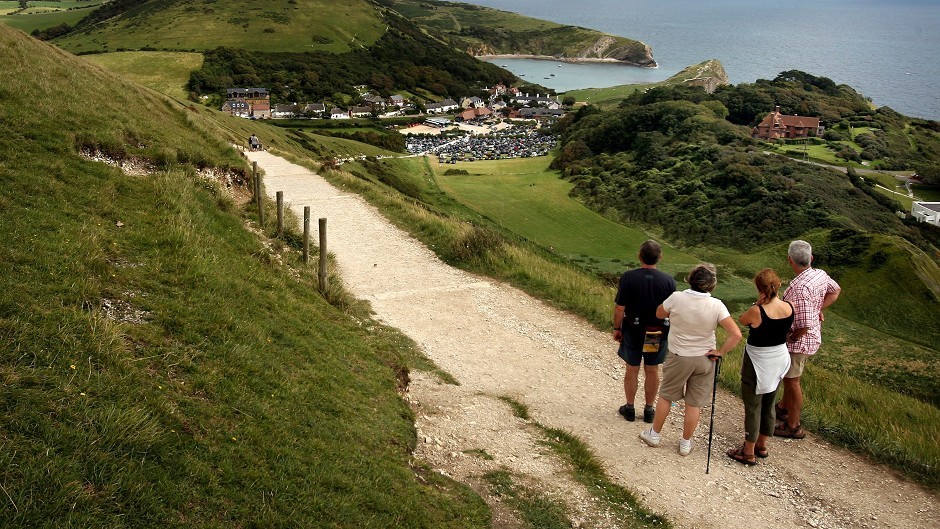Erica was on dessert duty at Lunch Club.
Gathering Bramleys from the tree at the bottom of our garden, she set to peeling, coring, slicing and sugaring before adding crumble topping, baking, cooling, transporting, reheating and ultimately serving up to the lovely old people in our village.
Afterwards, the vote of thanks concluded thus: “And thank you for the apple crumble made with apples from Doctor Mack’s garden!” It omitted to mention my wife’s involvement entirely.
Lunch Club is legendary. Community groups like these might be low-key and unassuming but they can transform the lives of those involved. Coming together for a bowl of soup, home baking, chat and activities, it’s a milestone in the week and an opportunity for the community to show some solidarity.
I see the consequences of isolation every day. Modern hi-tech medicine with scanners, surgery and medicines is all very well, but unless we are able to recognise and influence the wider determinants of health, our work can feel futile, the miraculous technology redundant.
Each of us will have individual building blocks for a healthy life. It is more than just avoiding well-known harms from alcohol, tobacco, street drugs and poor diet. It’s also about building in the good things in life such as social contact, exercise and fresh air. We all benefit from structure in our week, feeling connected and having purpose in our lives but there’s often a gap to be bridged between our knowledge and our actions.
Many of my patients ask if there are things they can do for themselves, rather than simply take medicines and this, whilst music to my ears, is not always easy to advise on. One difficulty is simply knowing what is out there in the community that might be of help. In Glasgow, “Links Workers” have been embedded into practices to help address this.
Patients can meet them to discuss their circumstances and use the Links Workers’ knowledge of the resources available locally to help formulate individually tailored plans, with patients even being accompanied to the first meeting if necessary. My practice is keen to explore the idea of employing someone in this role and there is an ambition for these posts to be widely available in practices across Scotland.
Whilst the Links Workers’ role is invaluable, it is just as important that we can all access this information independently. ALISS (A Local Information System for Scotland, online at www.aliss.org) is a website trying to achieve this, by providing a database of resources in local areas. You’ll find walking or running groups, men’s sheds, sports clubs, dementia groups in community woods, green gyms and choirs for people with chronic lung disease amongst many other options, with more added all the time.
Whilst groups have the benefit of friendly chat and companionship, this bonhomie is not necessarily for everyone. Just getting out into the fresh air for 30 minutes each day has positive effects on your physical and mental health.
In Japan they have gone one step further and have researched the benefits of “forest bathing” – the idea being that simply absorbing the sights, smells and sounds of woodland and green spaces makes us healthier. They describe the “soft fascinators” of our natural environment, gently engaging with our senses as we absorb the scale of the wider landscape, or the beauty of our nearer environment or the minute detail of individual leaves, mosses or lichens. This contrasts with our built environment with its hard contours, sharp edges and flat surfaces, deadening our senses and encouraging us to seek other distractions to occupy our attention, resulting in a frantic need to be artificially entertained.
But if the great outdoors is a long way away from home, even our most built-up cities have precious places to escape into nature. This is one of the reasons we need, more than ever, urban parks, gardens and wild areas, freely accessible to us all.
It is clear that our future health and happiness depend on more than just science, medicines and technology. We are also going to be affected by the communities we live in, our connection to each other and our natural environment. We need to get that balance right, but a balance it is. For those with busy lives it is easy to ignore this and fail to slow down and value our personal wellbeing, and for those struggling with the bare necessities it may seem like an irrelevant diversion.
Meanwhile back at Lunch Club, it’s not just the recipients of the apple crumble who benefit. The volunteers who give their time and care providing the lunches enjoy the same fellowship and satisfaction; the boundaries blur and Lunch Club becomes one small part of the community infrastructure that keeps us all happy, healthy and resilient to the challenges of life, providing us with comfort and assurance that it will be there when our turn comes to be old.
As this becomes understood, as the cogs within the community are recognised, strain on the NHS and the social care system will be reduced and better able to be there for us when we need it.
